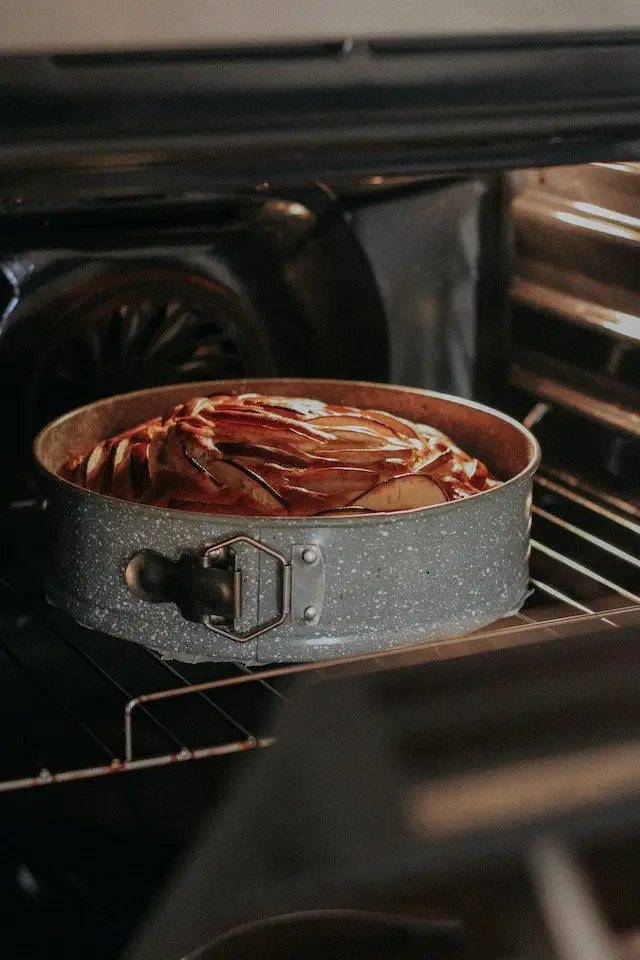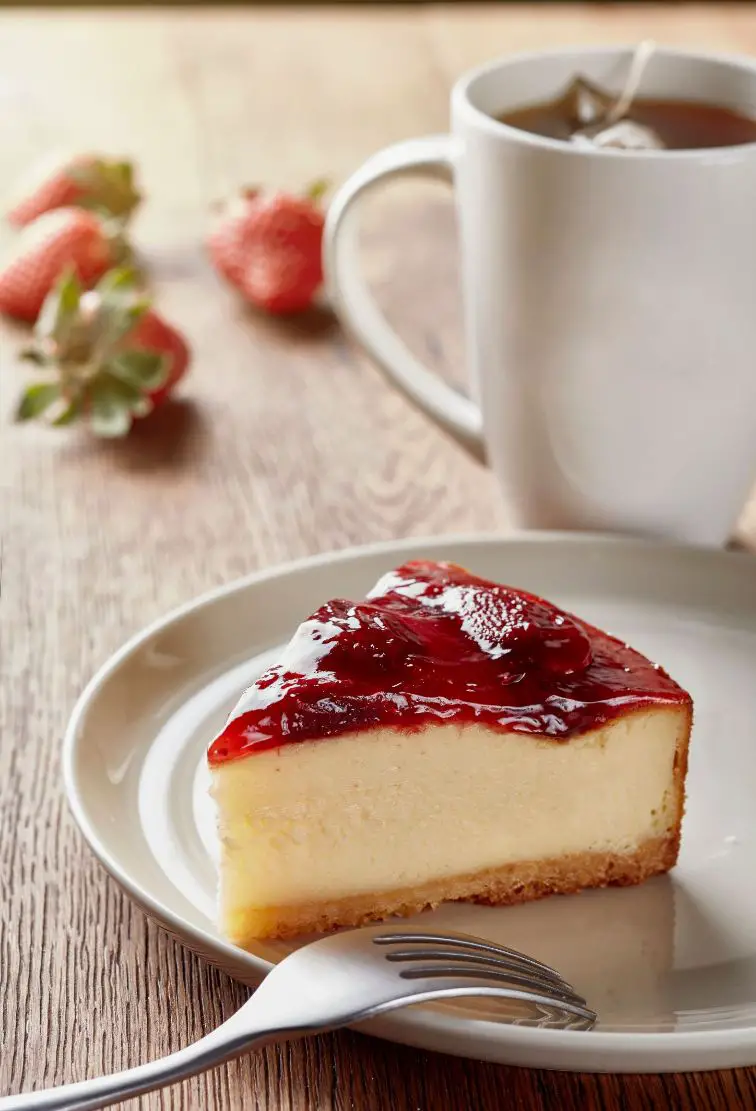Are you tired of encountering a soggy cheesecake crust that ruins your otherwise perfect dessert?
Don’t worry, you’re not alone! Many baking enthusiasts have faced the same issue and wondered, “Why is my cheesecake crust soggy?”
In this article, I’ll reveal the reasons behind a soggy cheesecake crust and provide you with effective solutions on how to fix soggy cheesecake crust, to ensure your cheesecake turns out perfect every time.
So, Let’s dive in.
Why is My Cheesecake Crust Soggy – Revealed
A soggy cheesecake crust can be quite disappointing, but several factors could contribute to this issue.
Here are 4 common reasons why your cheesecake crust turning out soggy:
1. Excessive Moisture Content in the Filling
If the filling of your cheesecake contains a significant amount of moisture, it can penetrate and saturate the crust while baking.
This occurrence results from the batter being excessively mixed or incorporating ingredients with high water content, such as juicy fruits or thin liquids.
The excess moisture then interacts with the crust, causing it to lose its crispness and become soft and soggy.
2. Inadequate Pre-baking of the Crust
Neglecting the crucial step of pre-baking the crust before introducing the filling can trigger a situation where the crust absorbs excess moisture throughout the baking process.

Pre-baking, also known as blind baking, is the process of partially or fully baking the crust on its own before adding the filling.
This practice establishes a protective layer that acts as a barrier, preventing the filling’s moisture from infiltrating and compromising the structural integrity of the crust.
When the crust is not pre-baked, it lacks this safeguard, leading to the undesirable outcome of a soggy crust due to the interaction with the filling’s moisture during baking.
3. Improper Sealing of the Crust
One common issue that can affect the texture of a cheesecake is the improper sealing of the crust before adding the filling.
When the crust is not adequately sealed, it creates an opening for moisture from the filling to seep into the crust.
This moisture infiltration can cause the crust to become soggy over time.
4. Overbaking the Cheesecake
If a cheesecake is baked for an extended period or at an excessively high temperature, it can lead to an over-evaporation of moisture from the filling.

Consequently, this excess moisture is absorbed by the crust, resulting in a soggy texture.
It’s important to adhere to the recommended baking time and temperature to ensure that the cheesecake retains the appropriate level of moisture, preventing the crust from becoming overly moist and preserving its desired consistency.
How to Fix Soggy Cheesecake Crust? 6 Easy Steps
Fixing a soggy cheesecake crust involves a few steps to help absorb excess moisture and restore the desired texture.
Here’s what you can do:
1. Drain Excess Moisture
If your cheesecake has already been baked, start by carefully removing the cheesecake from the pan.
Gently pat the crust with paper towels to absorb any excess moisture. This can help remove some of the wetness from the crust.
2. Bake the Crust
If the cheesecake is still in the oven, you can try to salvage the crust by baking it for an additional 10-15 minutes at a low temperature, around 325°F (163°C).

This will help evaporate some of the moisture and crisp up the crust.
3. Refrigerate
After removing the cheesecake from the oven, allow it to cool completely. Then, place it in the refrigerator for a few hours or overnight.
This can help the crust firm up and may improve its texture.
4. Use a Rack
If you notice that the moisture is mainly coming from the filling, place a wire cooling rack over the top of the cheesecake while it’s in the refrigerator.
This can help air circulate and prevent condensation from making the crust even soggier.
5. Rebaking the Crust
In some cases, you might consider removing the cheesecake from the pan, carefully scraping off the soggy crust, and making a new crust to press into the pan.
You can then bake the crust separately for a short time before adding the filling back in.
6. Serve Creatively
If the crust remains a bit soggy, you can serve the cheesecake in individual dessert glasses, similar to a parfait.

This innovative presentation not only masks any residual crust dampness but also adds an element of elegance to the overall serving, ensuring that the damp crust does not detract from the visual appeal of the dessert.
How to Keep a Cheesecake Crust From Getting Soggy? 7 Effortless Ways
To prevent a cheesecake crust from getting soggy, follow these steps:
1. Choose the Right Crust
When deciding on a crust recipe for your cheesecake, it’s essential to opt for one that provides durability and complements the nature of the cheesecake.
You may find that crusts made from ingredients like graham crackers, digestive biscuits, or shortbread possess superior structural integrity, making them excellent choices for your cheesecake base.
2. Prebake the Crust
To enhance the stability and texture of your cheesecake, you should prebake the crust before introducing the creamy filling.
This preliminary baking process involves placing the crust in the oven at a temperature of 350°F (175°C) for approximately 8 to 10 minutes.
This technique accomplishes two crucial objectives: first, it solidifies the crust, ensuring it maintains its form during the baking of the entire cheesecake.
Second, it reduces the moisture content within the crust, preventing it from becoming soggy or overly moist when combined with the filling.
3. Cool Completely
Following the prebaking stage, it is imperative to allow the crust to cool down completely before proceeding to add the cheesecake filling.

This cooling period serves a vital purpose: by giving the crust ample time to reach room temperature, you minimize the risk of condensation forming between the crust and the subsequently added filling.
This is crucial in preserving the overall texture and quality of the cheesecake.
4. Add a Barrier
For an extra layer of defense against moisture infiltration, consider applying a thin coating of either melted chocolate or an egg white wash onto the cooled crust.
This additional step helps create a barrier that effectively shields the crust from potential moisture emanating from the filling.
By implementing this precautionary measure, you contribute to maintaining the desired consistency and integrity of both the crust and the filling, resulting in a perfectly executed cheesecake.
5. Avoid Over-Mixing
When preparing the cheesecake filling, exercise caution to avoid excessive mixing.

Over-mixing the batter can inadvertently introduce an excessive amount of air bubbles in cheesecake batter, resulting in undesirable outcomes such as cracking on the surface and a softer interior texture.
This softer texture could potentially contribute to a crust that becomes soggy over time, diminishing the overall quality of your cheesecake.
6. Bake in a Water Bath
When baking the cheesecake, consider using a water bath. Place the cheesecake pan inside a larger pan filled with hot water.
This helps to regulate the temperature and create a more gentle and even heat, reducing the risk of overcooking the edges of the cheesecake and thus preventing a soggy crust.
7. Cool Gradually
After baking, turn off the oven and leave the cheesecake in the oven with the door slightly ajar for about an hour.
This gradual cooling process can help reduce the likelihood of cracks and excess moisture forming.
Why Is My Cheesecake Crust Soggy – Conclusion
In conclusion, a soggy cheesecake crust can be a disappointing setback in a delightful dessert.
Several factors can contribute to this issue, including excessive moisture in the filling, inadequate pre-baking of the crust, improper sealing, and overbaking the cheesecake.
To fix a soggy crust, there are several steps you can take.
Firstly, if the cheesecake has already been baked, carefully removing it from the pan and gently patting the crust with paper towels to absorb excess moisture can help alleviate the problem.
Additionally, baking the crust at a low temperature for a short period can help evaporate moisture and restore crispness. Refrigerating the cheesecake can also assist in firming up the crust’s texture.
By understanding the causes of a soggy cheesecake crust and employing these remedial measures, you can elevate your baking skills and ensure that your cheesecakes consistently showcase a perfect balance of flavors and textures, leaving your guests impressed and satisfied with each delightful bite.

